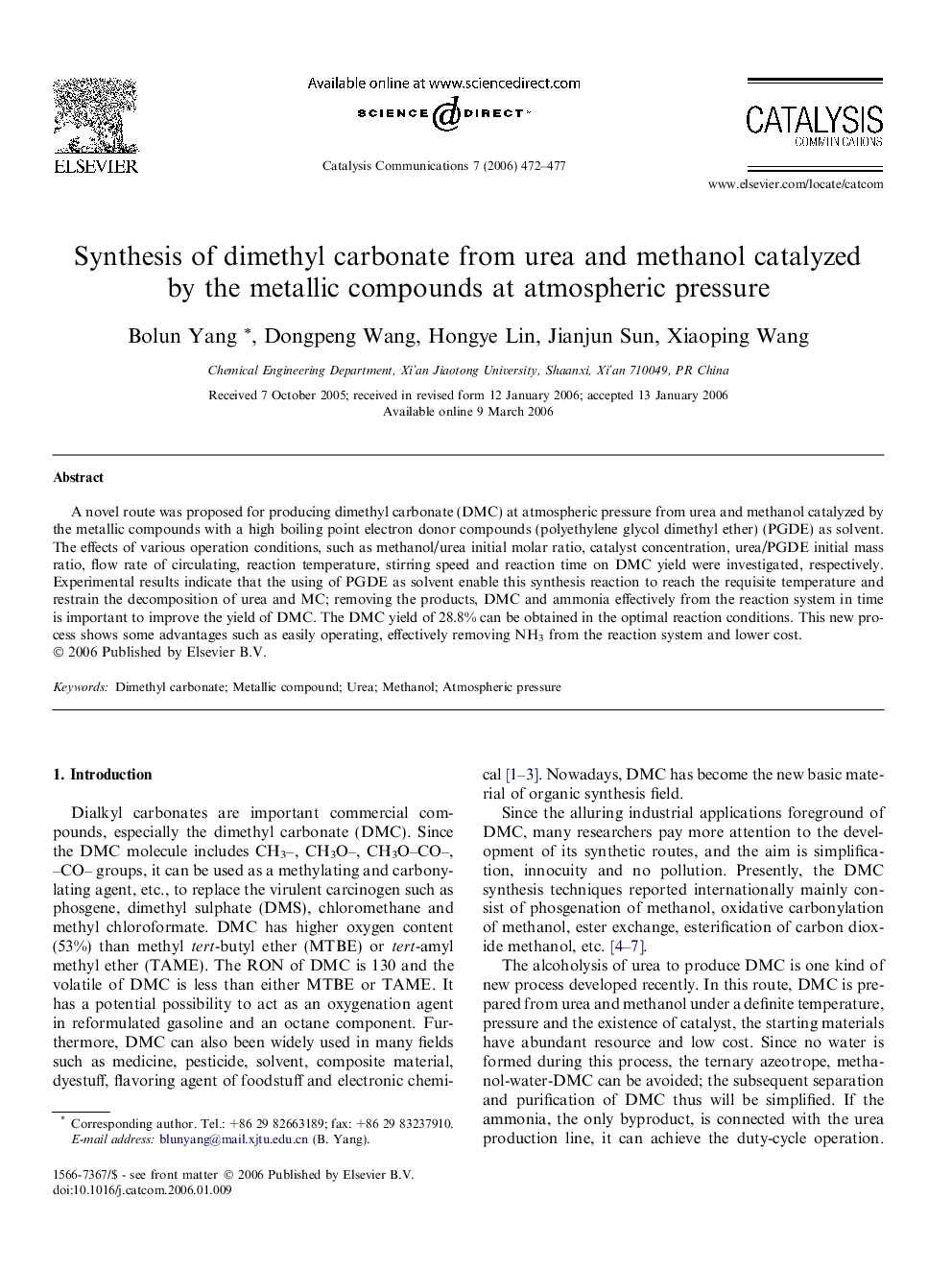| Article ID | Journal | Published Year | Pages | File Type |
|---|---|---|---|---|
| 52613 | Catalysis Communications | 2006 | 6 Pages |
A novel route was proposed for producing dimethyl carbonate (DMC) at atmospheric pressure from urea and methanol catalyzed by the metallic compounds with a high boiling point electron donor compounds (polyethylene glycol dimethyl ether) (PGDE) as solvent. The effects of various operation conditions, such as methanol/urea initial molar ratio, catalyst concentration, urea/PGDE initial mass ratio, flow rate of circulating, reaction temperature, stirring speed and reaction time on DMC yield were investigated, respectively. Experimental results indicate that the using of PGDE as solvent enable this synthesis reaction to reach the requisite temperature and restrain the decomposition of urea and MC; removing the products, DMC and ammonia effectively from the reaction system in time is important to improve the yield of DMC. The DMC yield of 28.8% can be obtained in the optimal reaction conditions. This new process shows some advantages such as easily operating, effectively removing NH3 from the reaction system and lower cost.
